Responsible Consumption and Production

This goal fosters green industries, clean production, the use and efficient management of energy in industries and waste and pollution reduction. It also advocates for environmentally sustainable policies in industrial production and consumption, such as circular economy approach.
Concepts and case studies under SDG 12 are as follows:
Water resources and water pollution

Water resources are natural sources of water that occur on the Earth that are of potential use to humans. Safe drinking water and adequate sanitation and hygiene are fundamental to the protection of people's health. However, this crucial-for-life resource is being contaminated and wasted. According to the World Bank, there are currently 2.1 billion people who do not have access to safely managed water and 844 million who do not have a basic drinking water supply. Given that the fresh water resources are limited, but will be needed much more in the future, ensuring access to safe drinking water and adequate sanitation for everyone, everywhere, directly contributes to achieving good health and wellbeing (The World Bank, 2018).
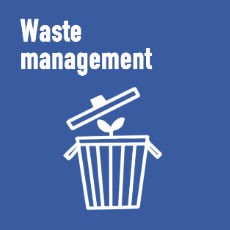
Wastewater treatment in Hong Kong

Textile waste water
Marine resources

Marine resources are materials and attributes found in the ocean that are considered to have value, whether that value is intrinsic or monetary. They include a huge number of things: biological diversity, fish and seafood supplies, oil and gas, minerals, renewable energy resources, tourism potential and unique ecosystems like coral reefs (Qamar , 2018). The ocean is the largest ecosystem on Earth; it is the planet’s life support system. Oceans generate half the oxygen we breathe and contain more than 97% of the world’s water. For this reason, the diversity and productivity of the world’s oceans is vital for humankind (Marine Conservation Institute, 2019).

Overfishing in Hong Kong
Corporate social responsibility

Corporate social responsibility (CSR) is a self-regulating business model that helps a company be socially accountable—to itself, its stakeholders and the community. By practicing corporate social responsibility, companies are conscious of the kind of impact they have on all aspects of society including the economy, society and the environment (Chen, 2019). CSR goes beyond earning money for shareholders, it is concerned with protecting the interests of all stakeholders, such as employees, customers, suppliers and the communities in which businesses operate (McCombs School of Business, n.d.).

How Hong Kong’s CSR experience can enhance the success of Belt and Road initiative
Sustainable consumption

Sustainable consumption refers to 'the use of services and related products, which respond to basic needs and bring a better quality of life while minimizing the use of natural resources and toxic materials, as well as the emissions of waste and pollutants over the lifecycle of the service or product, so as not to jeopardize the needs of further generations' (UNEP, 2010). Sustainable consumption is not just about buying more sustainable products, but also refers to ways of living that improve upon mainstream consumption practices.

Wood-based fibers could lead sustainable fashion out of the woods
Ecological footprint

The ecological footprint refers to the impact of human activities on the environment. The footprint is measured in terms of the amount of biologically productive land and water needed to produce the goods humans consume and to assimilate the waste generated, including carbon emissions. In other words, it is the amount of the environment necessary to produce the goods and services necessary to support a particular lifestyle (WWF, 2019).Measuring the ecological footprint helps to understand our individual, as well as countries’, impact on the planet and helps us adjust our lifestyle and have targeted public investments.

Biking in the Philippines
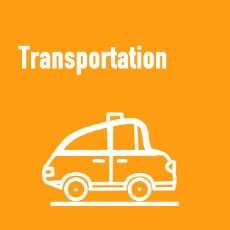
Car sharing initiative at Cornell University (USA)
Closed-loop economy

The closed loop model is a biomimetic (life-imitating) approach, which takes nature as an example and considers that systems should work like organisms, processing nutrients that can be fed back into the cycle—hence the terms 'closed loop' or 'regenerative' used to describe it. The closed-loop economy is also called the 'circular economy' and it is an industrial system that is restorative or regenerative by design. It replaces the ‘end-of-life’ concept with restoration, shifts towards the use of renewable energy, eliminates the use of toxic chemicals, and waste by improving the design of materials, products, systems and business models (Ellen MacArthur Foundation, 2016).
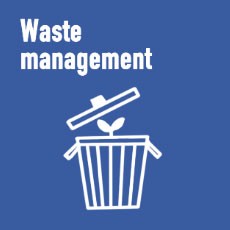
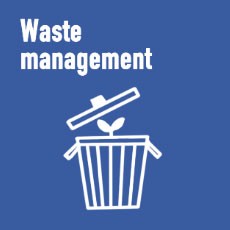
How sustainable fashion contributes to the closed-loop economy?
Waste management

Waste management is the collection, transportation and disposal of garbage, sewage and other waste products. Important reasons for working towards proper waste management are to protect the environment and support the health and safety of the population. Certain types of waste can be hazardous and can also pollute the environment. Bad waste management practices can also cause land and air pollution resulting in serious medical conditions in humans and animals. Good waste management, on the other hand, can help save costs as it reuses materials, conserves natural resources and creates safer environment, including workplaces (Department of Industry, Innovation and Science(AU) , 2018).
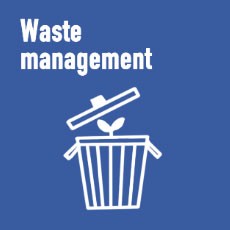
Hong Kong’s awareness on waste management
Energy conservation and efficiency

Energy efficiency involves using technology that requires less energy to perform the same function. For example, a light-emitting diode (LED) light bulb or a compact fluorescent light (CFL) bulb needs less energy than an incandescent light bulb. Energy conservation, on the other hand, is any behavior that results in the use of less energy, such as turning lights off when leaving a room and recycling aluminum cans (aluminum production requires a lot energy). If we want to preserve the Earth’s resources for the future and cut costs, the conservation of energy and energy efficiency both play an important role in sustainability issues.

